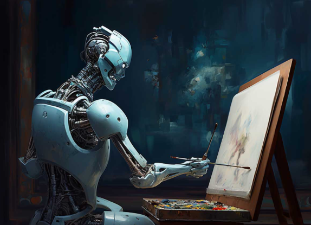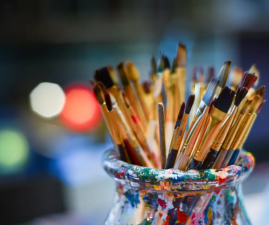The birth of artificial intelligence has had a significant impact on artists. In the traditional field of art creation, some artists, especially illustrators, are very worried that AI will erode their living space. After all, the speed at which artificial intelligence can be generated is incomparable to that of humans.
The birth of artificial intelligence has had a significant impact on artists. In the traditional field of art creation, some artists, especially illustrators, are very worried that AI will erode their living space. After all, the speed at which artificial intelligence can be generated is incomparable to that of humans.
In addition, the professionalism of human artists has also been challenged. After all, regardless of whether they have painting skills, anyone can input text descriptions and let artificial intelligence automatically generate rich pictures. This ability makes artists feel unprecedented threats.

Creativity in the Age of Advanced AI Tools
When advanced text-to-image tools can seamlessly edit existing photos, generate images using a specific style, or even create works in the style of almost every artist who has ever lived, it raises the question of whether human creativity will once again become obsolete. Many bold predictions have been made in the wake of some of the most prominent tools launched by AI companies. Many critics have declared that art will die, creative work will disappear, and human creativity will fade away. For the first time, these predictions no longer look like abstract concepts, but more like real possibilities.
While it is true that some AIs are able to generate large amounts of text, images, or audio at astonishing speeds, it is worth noting that many of the unprecedented outputs come down to the formulation of prompts that the AI algorithm uses to create the results in the first place. Prompts are a key human-level element of interacting with AI tools and are fundamental to guiding AI to achieve the desired creative behavior and results. At the same time, AI can make up for many of the elements it lacks to reach the level of art created by humans. It does this by processing large amounts of data.
Should we consider AI-generated images as art?
Art critic Jerry Saltz recently noted that the quality of art created by AI is poor, or as he puts it, "pretty bad illustrations." He also believes that most AI art lacks true imagination and creativity. He’d like to see the AI produce a truly original concept and work for a prompt like “The End of Civilization,” rather than creating in typical steampunk or NFT art styles like today.
There’s been a lot of debate surrounding the introduction of newfangled tools for making art. Many artists cringed at the development of the camera as a debasement of human talent. Purists in the 20th century also decried digital editing tools and computer-aided design programs as overly reliant on the work of untrained human collaborators. In 2018, Portrait of Edmond Bellamy became the first AI-created work ever sold at a major auction. The Christie’s painting sold for more than $500,000, making it a major breakthrough in the field at the time; however, the portrait was pretty rudimentary compared to what today’s image generators can do.
Meanwhile, Louis Rosenberg, a PhD candidate at California, has proposed a “humanity tax” on AI artworks made using tools trained on databases of creative works. Many see this as a practical first step toward a future where society might make greater use of AI technology.

Style Appropriation and Copyright Controversy
Some critics argue that the most striking feature of the current generation of AI tools is not just that they can create stunning works of art with little human input, but how they do it. AI image generators are built by scraping millions of photos from private databases or the open web. These tools are then trained to detect patterns and correlations in images to create new images of a similar style. AI systems like Midway are able to approach such a high level of detail because they have been trained on images, some of which are copyrighted works of real artists. As a result, artists who share their work online may unknowingly train their algorithmic opponents in a war of creation.
Response to Copyright Infringement Allegations
Many artists have claimed that AI applications are stealing their content and have called for stricter copyright laws to keep up with AI-generated art. Amid a backlash from photographers and artists, Midway CEO David Holtz revealed that his company did not obtain permission to use hundreds of millions of photos to train its AI image generators. Holtz defines his image-generating subscription service as a "search engine" that aggregates images from the internet, a claim he used to refute claims of copyright infringement.
Conversely, OpenAI has so far been cagey about DALL·E 2, refusing to release the code or data used to train the tool. Meanwhile, Stable Diffusion has decided to release its source code and disclose all information about the database they trained their AI model on. With this move, the text-to-image tool revealed that the work of thousands of artists had been involuntarily included in its dataset. A tool called “Am I Trained” now lets any artist check if their work was among the nearly 6 billion images used to train Stable Diffusion.
Finding the Creative Element in AI Art
These clashes and disputes between creatives, companies, artists, and developers mark only the beginning of a backlash against a new generation of impressive tools. While AI-generated art has the potential to create new opportunities and forms of expression, it also raises questions about the role of imagination and the inherently subjective factors that define art. As the debate around AI art continues, it seems that the final word on whether machines can create aesthetics that are considered new and original still lies in the hands of us humans.
